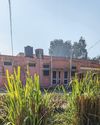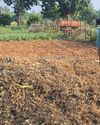
ARVIND KUMAR’S hopes were high when he bought two Jersey cows in 2019 by taking a loan of ₹1 lakh from his relative. “Despite constant care, the cows would often fall sick. Milk production would reduce in summers because of heat stress. Impregnating the cows, which is essential for lactation, was also difficult,” says the farmer from Durgapura village in Etawah district of Uttar Pradesh. Last year, he sold off the cows and bought three indigenous cows for ₹32,000.
Surender Sahoo, a farmer from Patapur village in Cuttack district of Odisha, narrates a similar story. “We make every effort to provide them cool interiors, but in summers exotic cows always foam at the mouth and wheeze. Their milking capacity also reduces drastically,” says Sahoo. Two years ago, he sold one of his two Jersey cows and now plans to sell the other one as well. He also has two indigenous cows, which he says are better accustomed to heat stress and diseases.
Denne historien er fra November 16, 2023-utgaven av Down To Earth.
Start din 7-dagers gratis prøveperiode på Magzter GOLD for å få tilgang til tusenvis av utvalgte premiumhistorier og 9000+ magasiner og aviser.
Allerede abonnent ? Logg på
Denne historien er fra November 16, 2023-utgaven av Down To Earth.
Start din 7-dagers gratis prøveperiode på Magzter GOLD for å få tilgang til tusenvis av utvalgte premiumhistorier og 9000+ magasiner og aviser.
Allerede abonnent? Logg på

TERMITE TRAP
A common tall grass variety provides a chemical-free option to control termites, highlights the need for mainstreaming local ecological knowledge

CLIMATE'S UNSOLICITED PAYOUT
Rising weather extremes is destabilising the insurance industry, driving up premium prices and pushing insurers out of high-risk markets. The crisis is also spurring re-invention of insurance sector.

NOTHING PSEUDO ABOUT IT
The fibre-rich banana pseudo-stem is a treasure trove of minerals and health benefits

Organic move
After 10,000 farmers in Dantewada district secured Chhattisgarh's first organic certification, the entire district now gears up to transition fully to organic farming

No more a rarity
What has caused widespread outbreak of the rare Guillain-Barré syndrome cases from seven states of the country?

DeepSeek AI model is a sobering idea for India
The Chinese artificial intelligence breakthrough reveals how far behind India is in the race for technological prowess

'Fragile terrain not the cause of tunnel collapse but an excuse'
In November 2023, the under-construction Silkyara Bend-Barkot tunnel in Uttarakhand collapsed, trapping 41 workers under the rubble. The rescue operation in the 4.5 km tunnel lasted 17 days and involved multiple teams. Australian geologist ARNOLD DIX, who is also the president of Switzerland-based International Tunnelling and Underground Space Association, as well as an engineer, a barrister and a farmer, assisted in the mission at India's request. Dix has now written a book on the incident. In an interview with ADITYA MISRA, Dix says the mishap was a failure to adapt construction methods to the rock conditions encountered. Excerpts:

BUDGET SQUEEZE
Poised to woo the middle class and tame fiscal deficit, Union Budget 2025-26 cuts corners on key welfare schemes, offers little for climate adaptation and decarbonisation

Decoded script
Genomelndia project creates genomic sequence database of 10,000 Indians, moving a step forward in disease detection and treatment

Introduce layers in poverty measurement
This is with reference to the article \"Convenience of poverty lines\" (16-31 January, 2025). Poverty is not like atmospheric pressure, which can be scaled down with high-precision instruments. It is a matter of deprivation. Poverty is also highly misunderstood. At one extreme, poverty means no food, no clothes, bad health and inadequate shelters; in essence a dearth in common and customary amenities. One can recognise this poverty. But, even if a person's conditions are only a notch above this level, their situation slides through the slick fingers of all the measurement of figures and wielders of statistics.